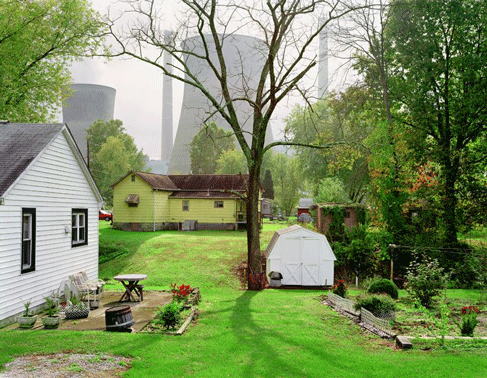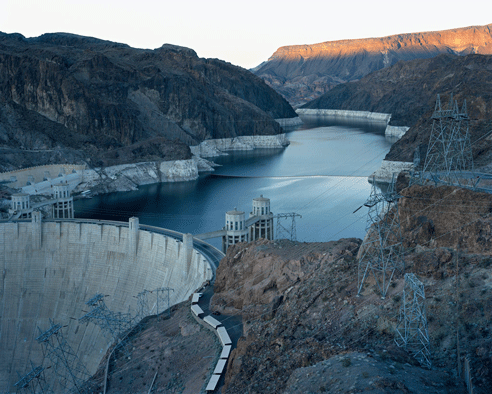Mitch Epstein didn’t set out to be an environmental photographer but one visit to a small town that was being bullied by a coal power company sent him on a journey of exploration of the energy sector in the United States. The people of Cheshire, Ohio were being pushed to leave so that American Electric Power could expand. Those that did leave were made to sign documents that would prevent them from speaking about or suing the company itself. Those that stayed have felt compelled to install security cameras and keep guns in their drawers for safety.

This compelling experience led Mitch on a 5-year mission from 2003 to 2008 (the height of coal production in the US) to document how American society’s consumerist drive has had a profound effect on the culture and the environment.
His photographic project American Power is layered with complex issues that encompass many of the United Nations Sustainable Development Goals (SDGs) such as Affordable and Clean Energy, Decent Work and Economic Growth and Responsible Consumption and Production. But initially, that was not Mitch’s intention.
In a recent article in Blind Magazine, Mitch is quoted, ‘“I didn’t step into American Power with an environmental agenda but it made me acutely aware of a sense of entitlement that is so embedded in the American way.
“The project asked very profound questions about the cost of the American Dream and the enormous privilege [of it]. We have to bear some responsibility for it because we created a set of conditions that were enormously costly in terms of their consequences and then we exported that idea globally.”’
Shooting with an 8x10 film, the collection was printed in large format for the exhibit. This allowed the viewer to spend time with each image and explore the complexity of the subject. For example, a seemingly formal image of the Hoover Dam shows not only the manufacturing of electricity but also the “bathtub ring” around Lake Mead that reveals the dramatic drain of water due to drought, evaporation and over-appropriation.

Mitch resists the label documentary photographer and as a result, this collection has a few surprises. He wanted to explore the notion of power and how it affects the relationship of industry and the surrounding communities but also the overall theme of energy. This is why you will see compelling images of residential backyards within walking distance of polluting coal plants and also photos of renewable energy projects and the destruction left by Hurricane Katrina.
The message of this project was so important that shortly after the travelling exhibition wrapped up, Mitch and his wife produced not only a photo book but also a website that encouraged visitors to discuss their relationship with power. In addition, they paid for billboards that combined the images with quotes from prominent people in society. Finally, in 2011, a stage production was produced whereby a solo cellist played music while Mitch told the stories behind the images. The intention of these additional projects was to reach as many people as possible so that the conversation around American culture and its relationship with the environment could continue.
In an interview with Nieman Storyboard, Mitch is quoted as saying, “Our sense of entitlement needs to be called into question. We could be a more conservation-minded society, thinking not just about ourselves but about others—our children, their children, and those that have much less on a global scale."
Even after 13 years, American Power continues to inspire artists and environmentalists around the world. Mitch has continued to create powerful projects such as Property Rights and Sunshine Hotel that provide insight into American society and compel us to discuss the relationship of culture, a growing economy and the environment. You can read more about his work on his website, here.
